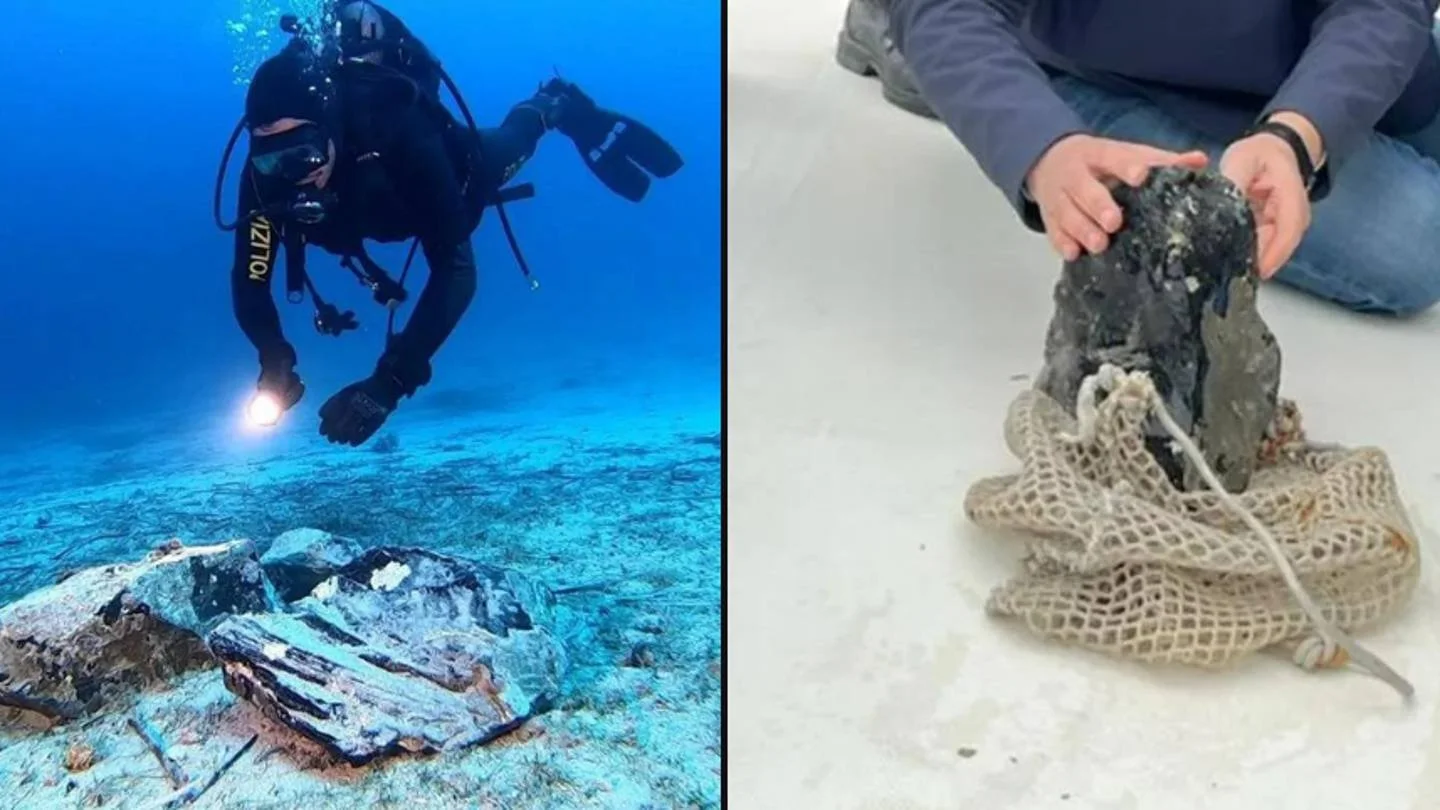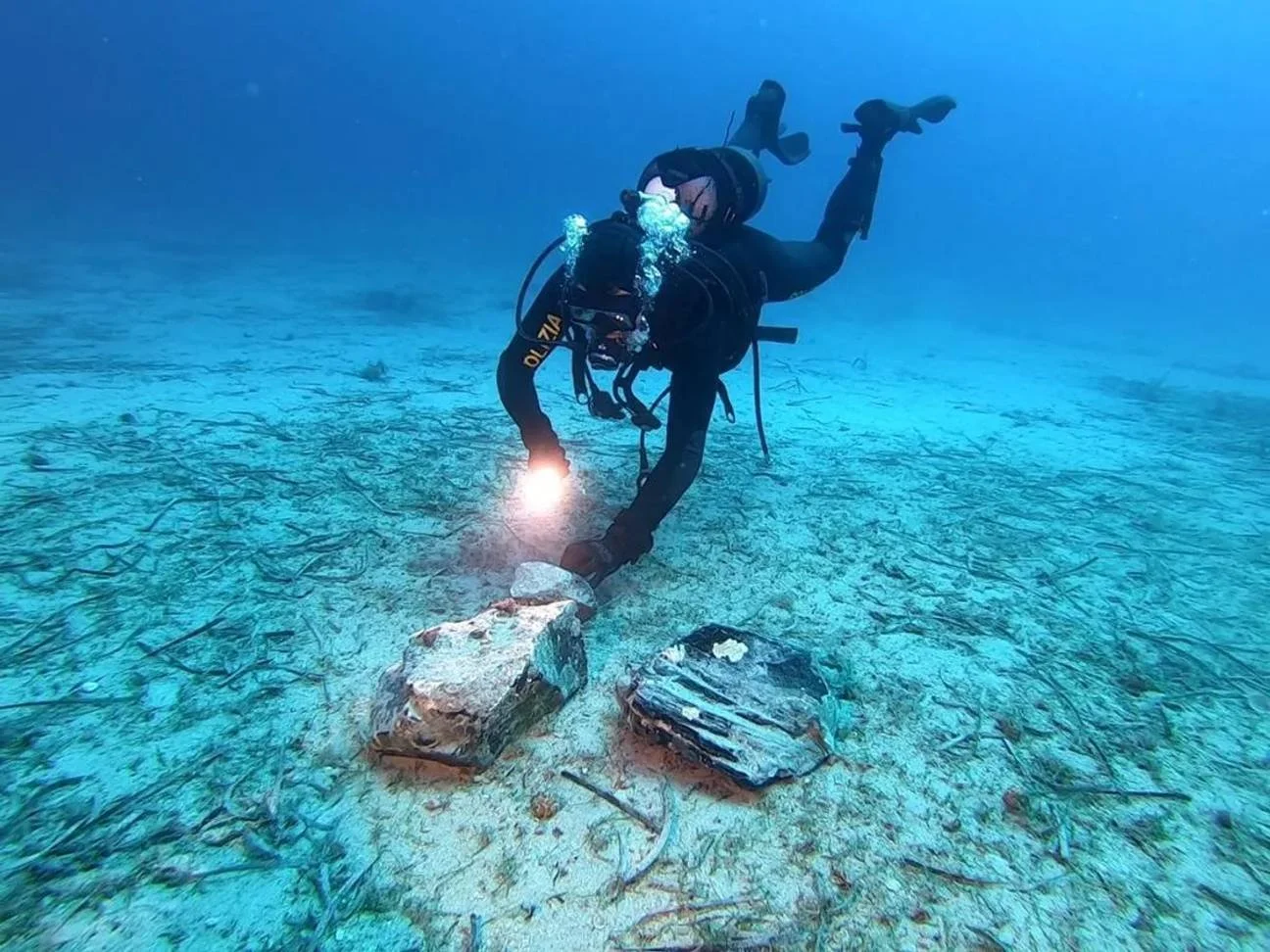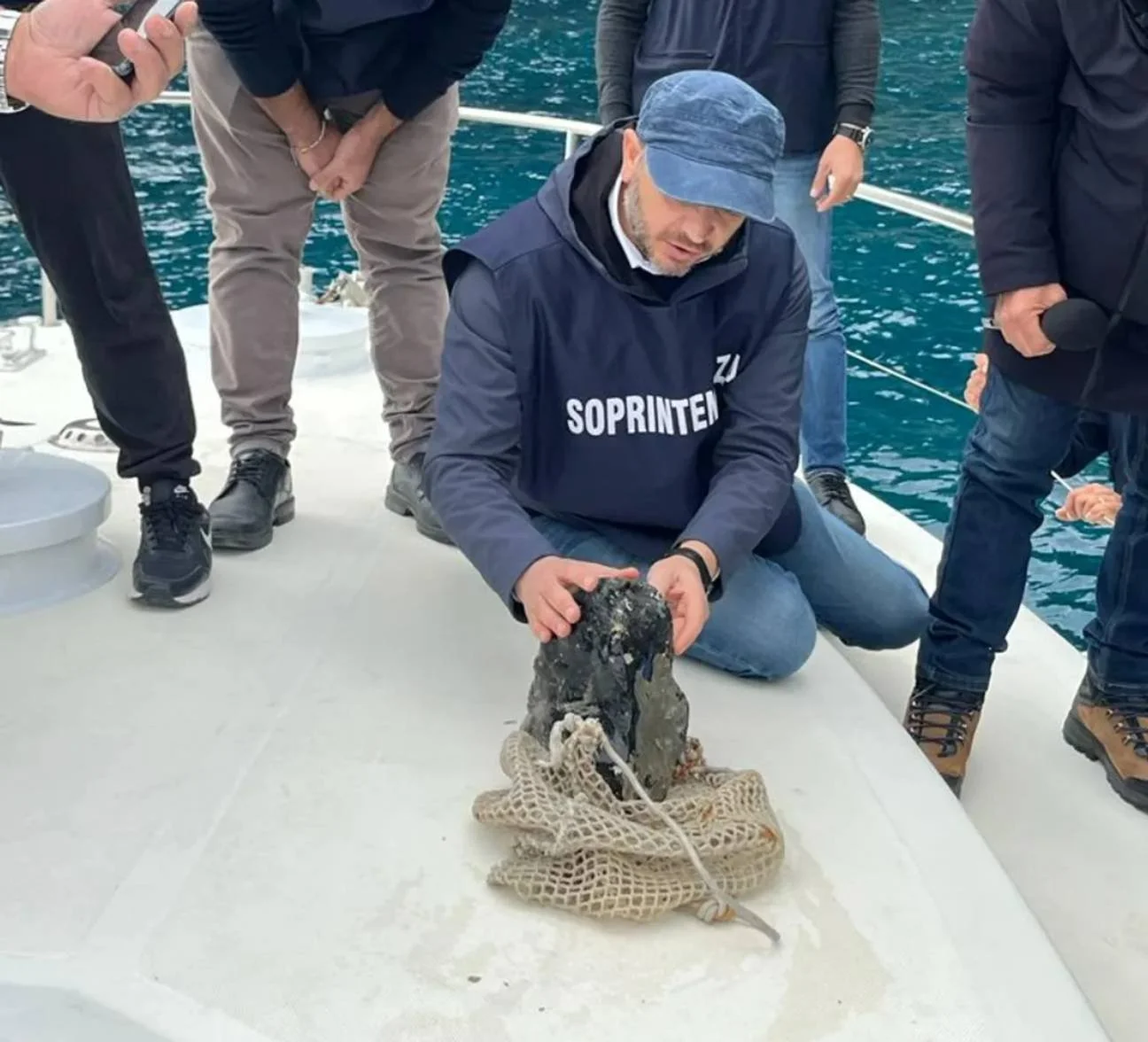As the sun glistens on the azure waters of the Bay of Naples, the ancient mysteries of the Mediterranean seabed have resurfaced, leaving both scientists and archaeologists captivated by the tantalizing possibilities of an 8,000-year-old discovery. Nestled near the enchanting island of Capri, a series of enigmatic artifacts crafted from volcanic glass have come to light, offering a glimpse into a bygone era that has long been submerged in obscurity.
This extraordinary find, which occurred in the vicinity of the White Grotto, adjacent to the famed Blue Grotto, has ignited speculation within the scientific community. Could these artefacts be remnants of a Neolithic shipwreck, a relic from a time when humans first ventured onto the open seas? The implications are nothing short of mind-blowing.
Unearthed by a collaborative effort between the Naples Police Department and marine archaeologists, the objects in question are fashioned from obsidian, a gleaming black volcanic glass born from the fiery embrace of erupting volcanoes. Their discovery adds an intriguing layer to an already captivating narrative of maritime history.
The most substantial artefact recovered from the seabed weighs a staggering eight kilograms (17.6 pounds) and measures approximately 28 x 20 x 15 centimetres (11 x 8 x 6 inches). Found at a depth ranging from 30 to 40 meters (98 to 132 feet), it is a source of bewilderment for researchers. The object bears the unmistakable marks of human craftsmanship on its surface, testifying to its modification by skilled hands from antiquity.
The relics were found in October. Credit: Superintendency of the Metropolitan Area of Naples
However, the mystery deepens as the precise function of this object remains shrouded in uncertainty. Why was it created, and what purpose did it serve in the lives of those who fashioned it? These questions are a siren's call to archaeologists and historians, beckoning them to uncover the secrets hidden beneath the waves.
Mariano Nuzzo, the superintendent of archaeology, fine arts, and landscape for the Naples metropolitan area, emphasizes the need for an extensive survey of the seabed. Such an endeavor is essential to verifying the potential presence of a ship's hull or other cargo materials that could shed light on this ancient enigma. The tantalizing prospect of discovering a Stone Age shipwreck in Mediterranean waters has never been realized, making this a groundbreaking opportunity in the field of maritime archaeology.
Sandro Barucci, a researcher and authority on ancient seafaring, acknowledges the unique challenges posed by the Mediterranean's temperate climate and salinity. Unlike freshwater environments, where Neolithic boats have been unearthed, the Mediterranean's marine ecosystem presents a harsher reality. Wooden ships that succumb to their depths become the prey of the wood-eating mollusk, Teredo navalis.
Barucci suggests that, if the vessel sank rapidly into the sand and remained protected, there might be a slim possibility of finding wooden remnants, especially if it was a dugout canoe—constructed from a single, hollowed-out tree trunk. However, such an occurrence would be exceedingly rare, if not entirely unique.
The artefacts were located at a depth of 100 to 130 feet. Credit: Superintendency of the Metropolitan Area of Naples
While the discovery of the ship's hull remains uncertain, Nuzzo hints at further explorations of the seabed. These future endeavors aim to clarify the manner in which the obsidian objects were deposited on the seafloor and explore the role of prehistoric Capri in this ancient maritime puzzle.
In conclusion, the artefacts uncovered near the White Grotto of Capri offer a tantalizing glimpse into the past, inviting us to retrace the steps of our Neolithic ancestors. As the Mediterranean's depths continue to guard their secrets, the archaeological community remains poised for further revelations that may reshape our understanding of ancient seafaring and the mysteries that lie beneath the waves. This discovery is not merely a testament to history but a testament to the enduring allure of the unexplored.









